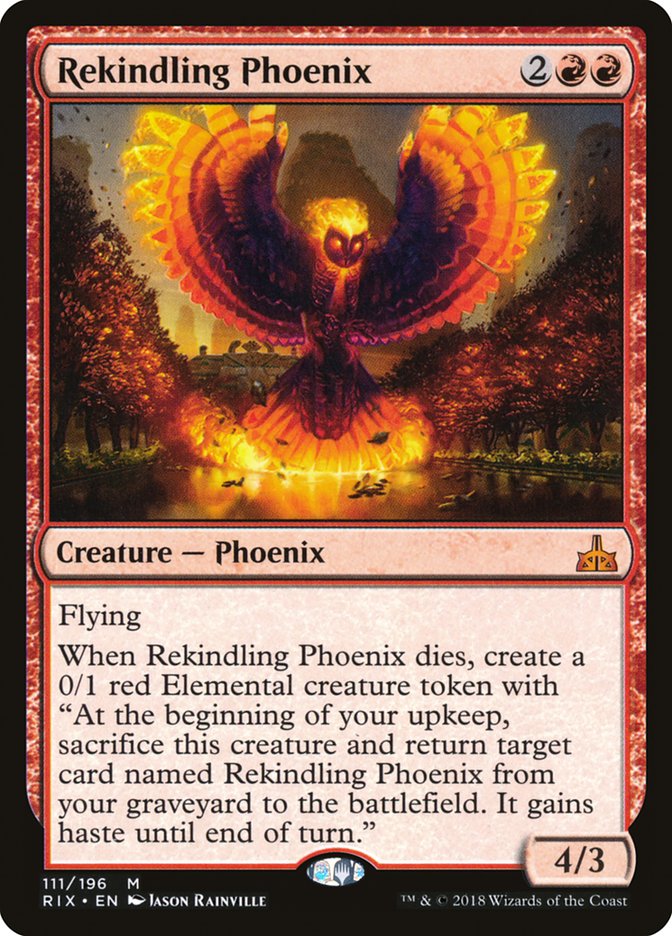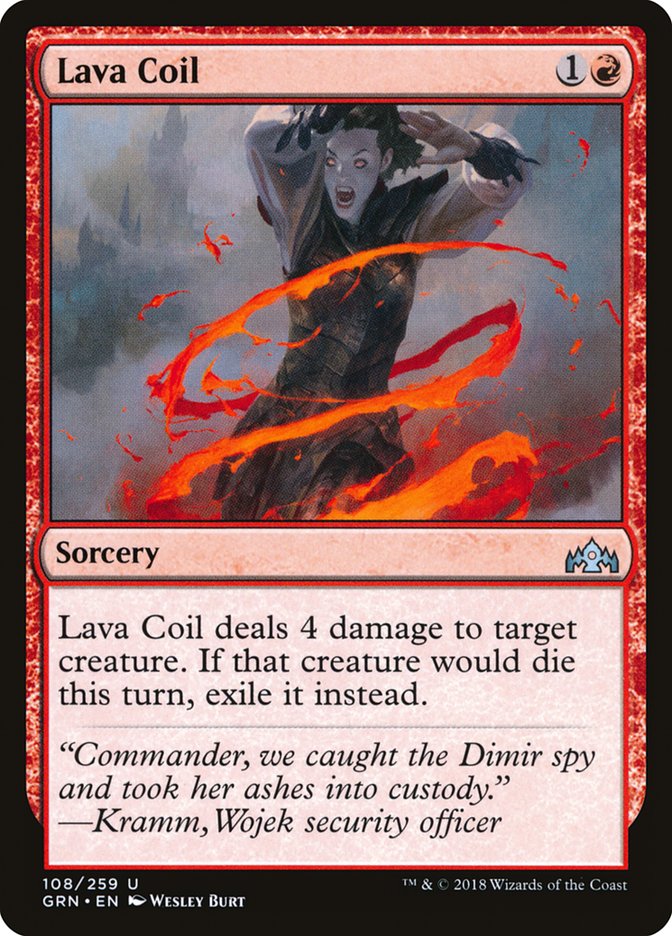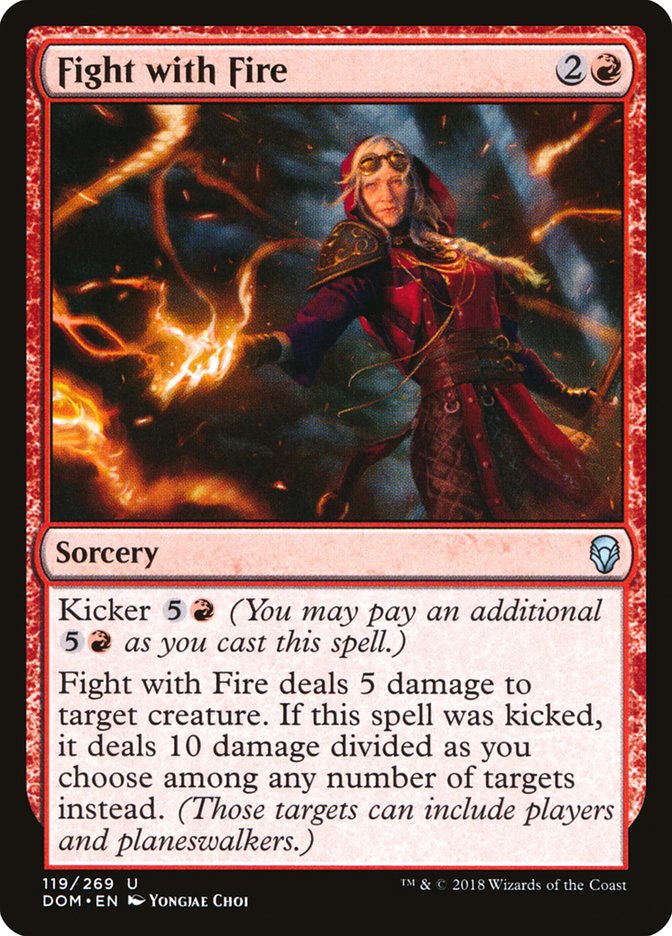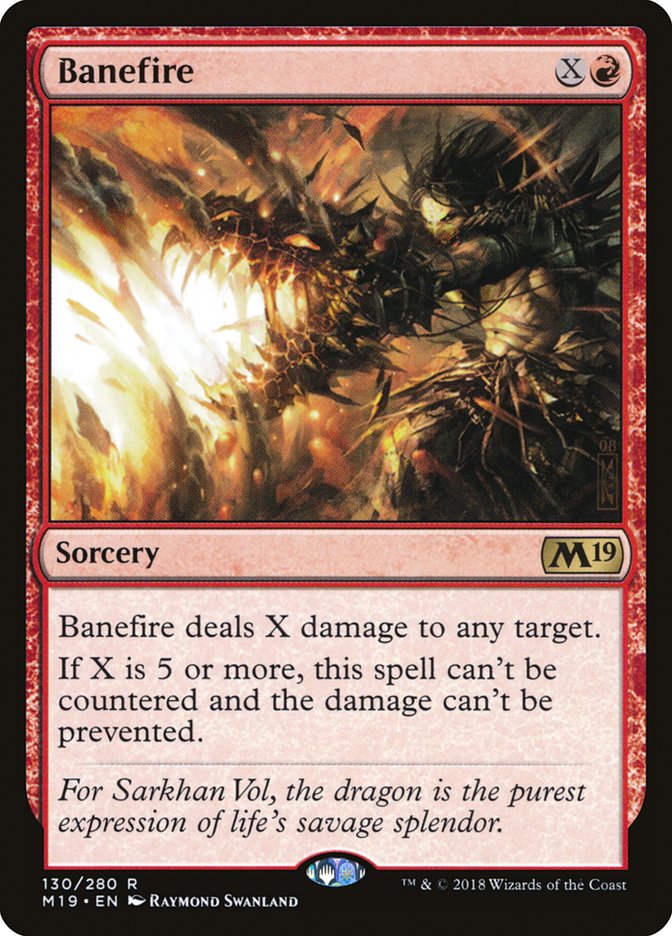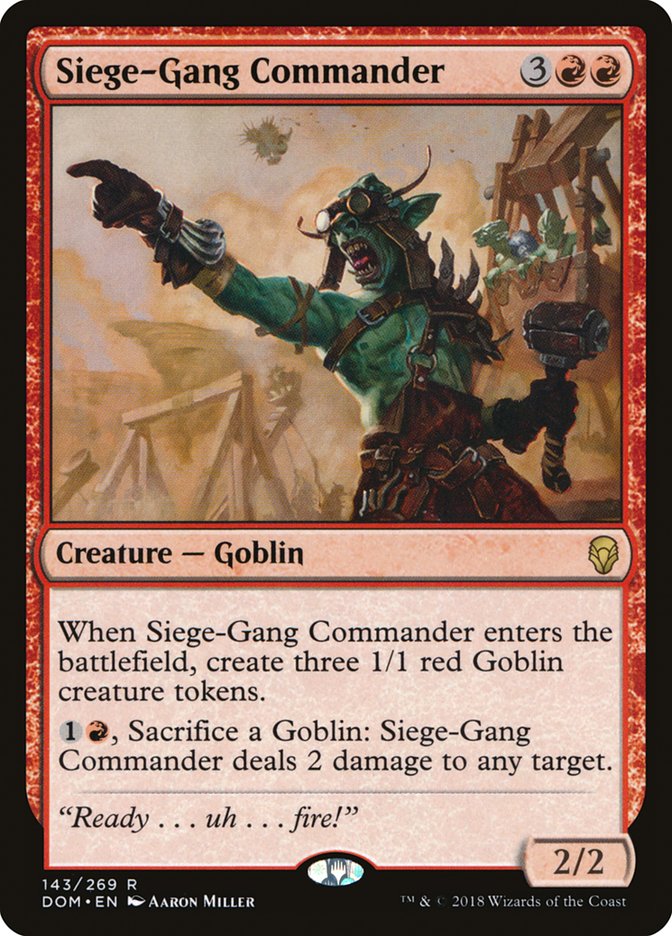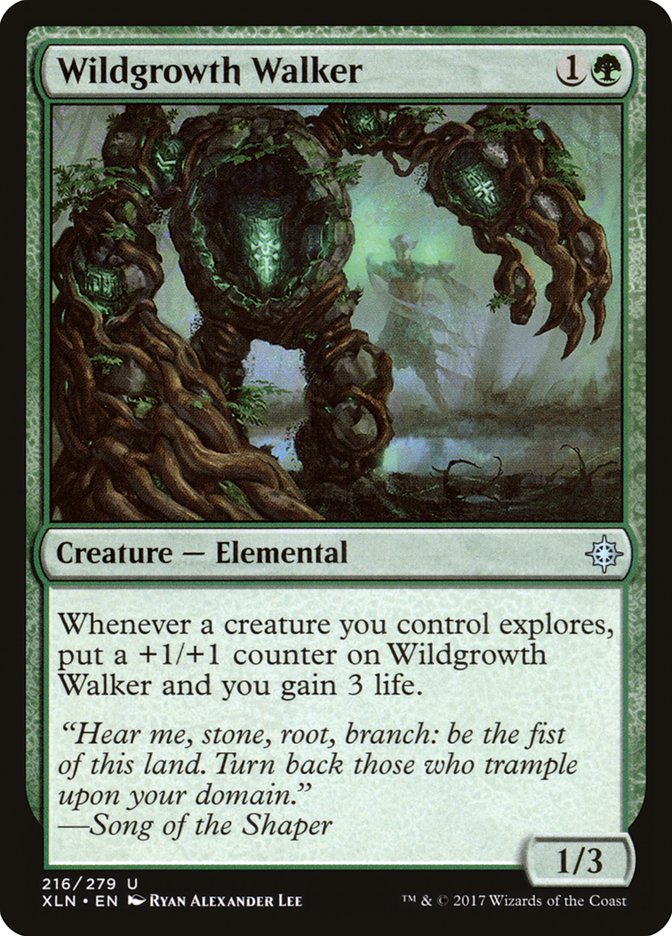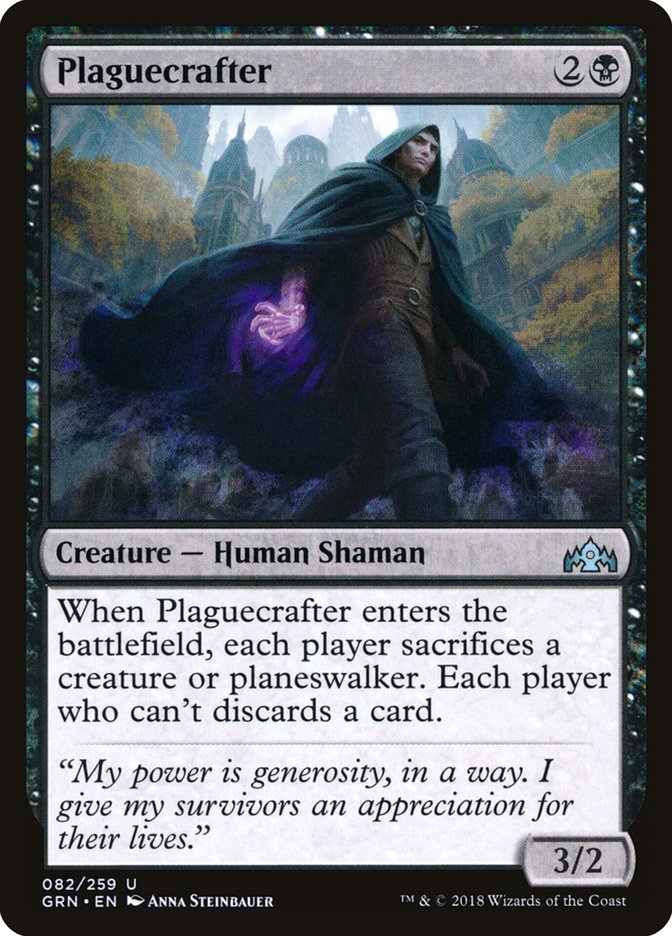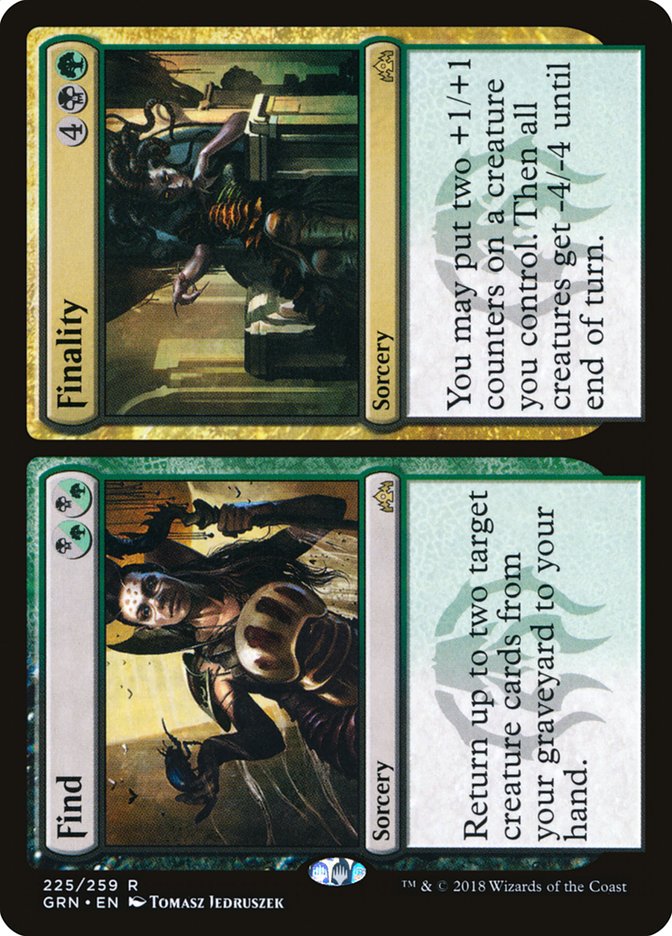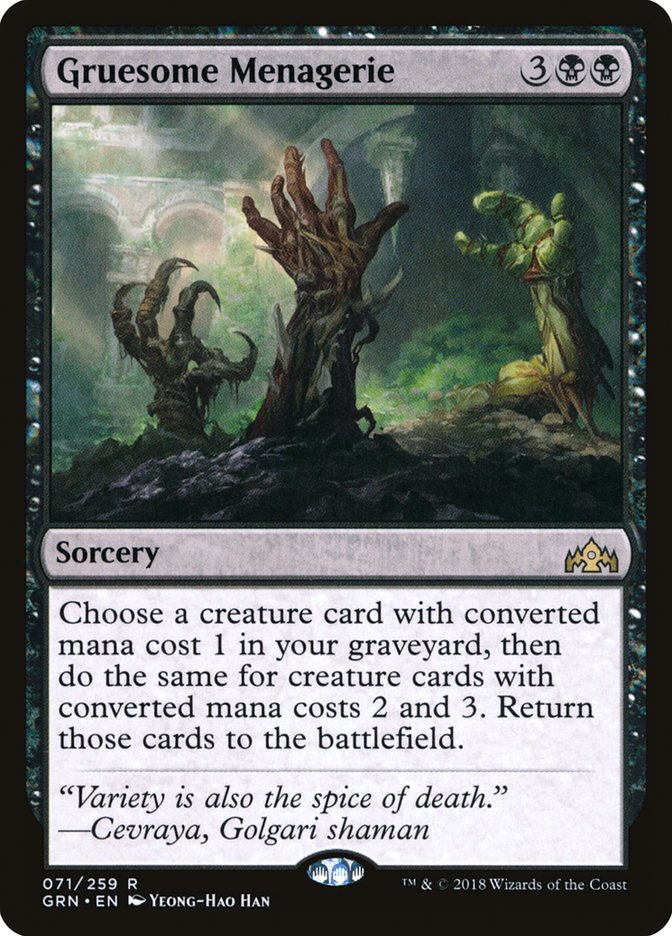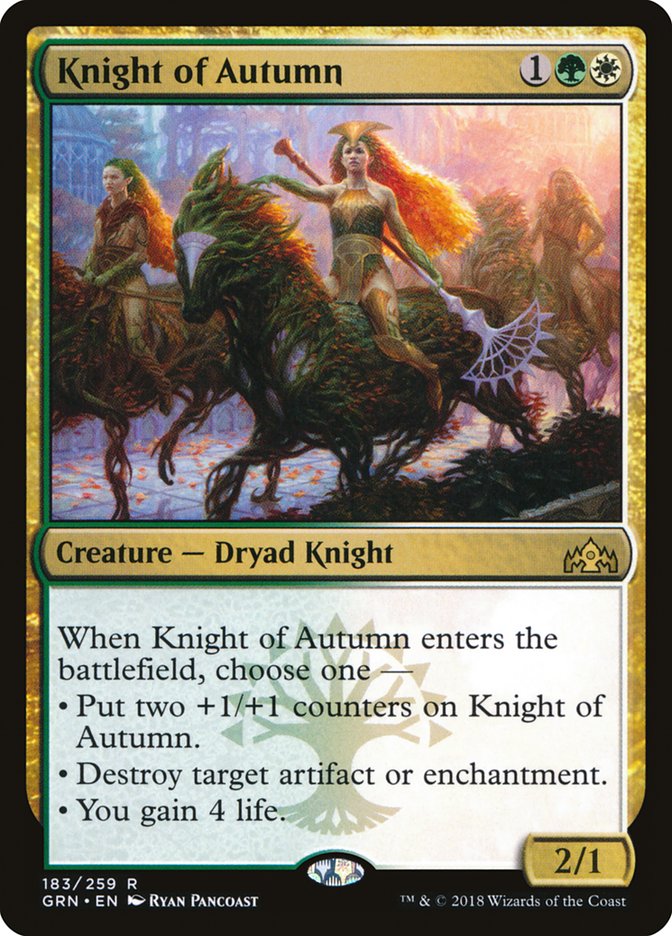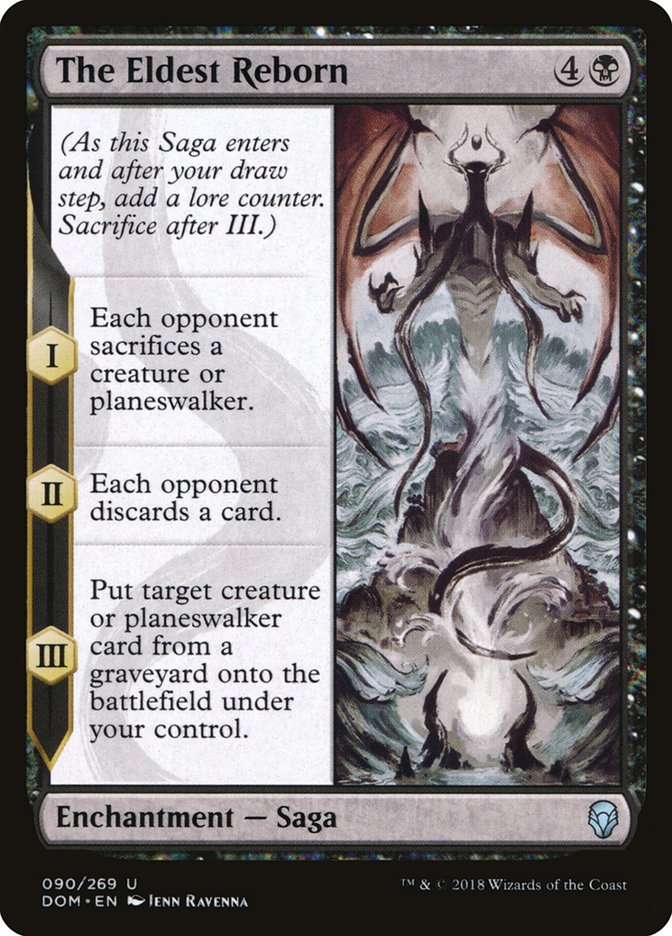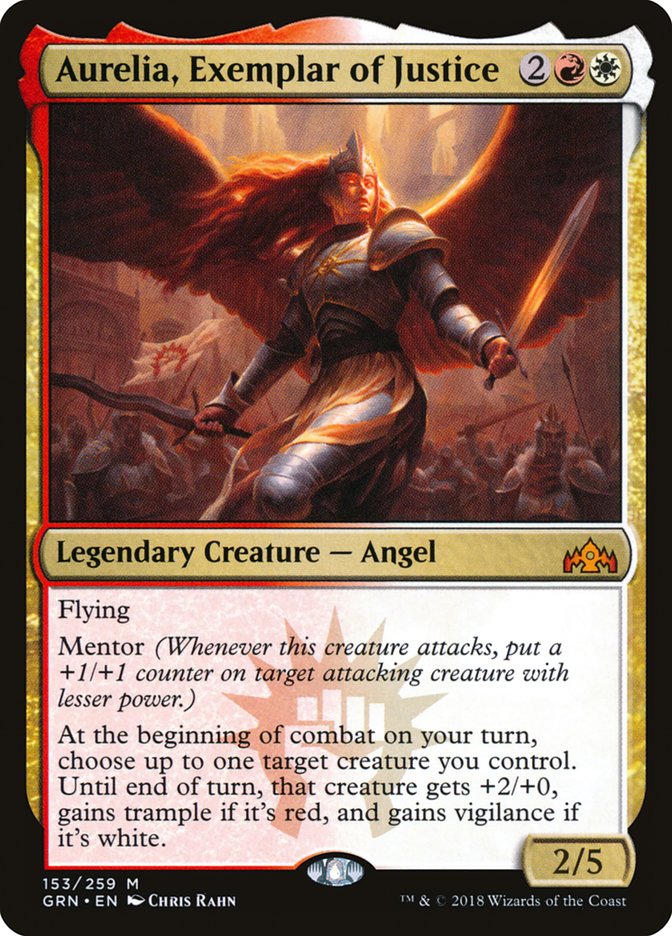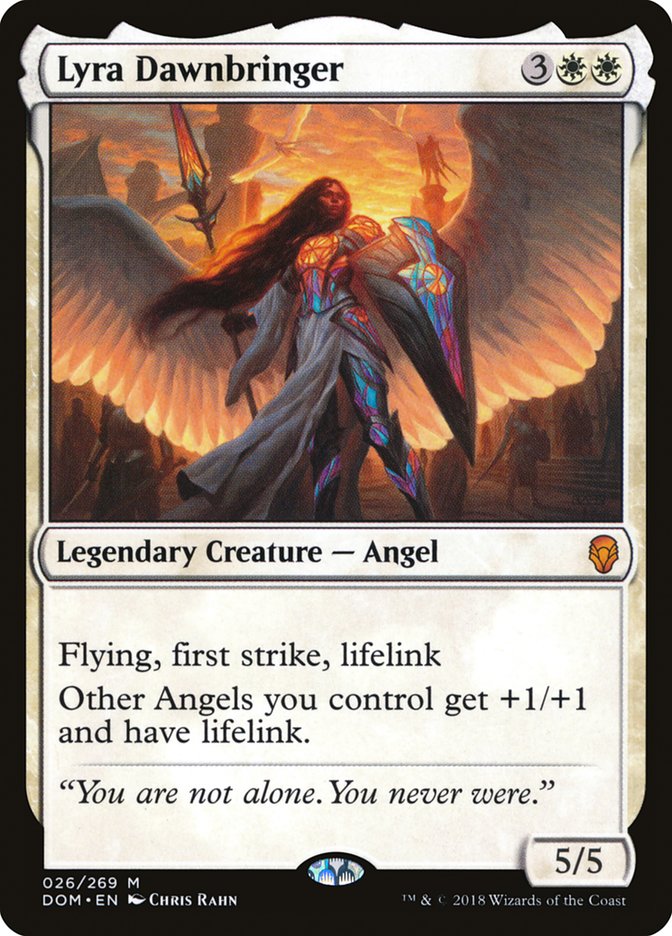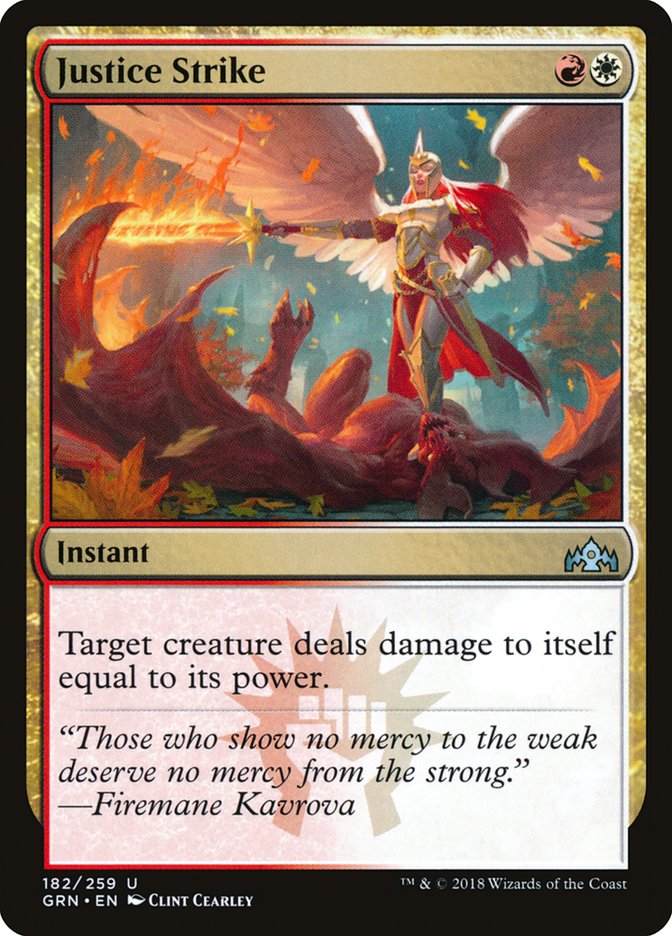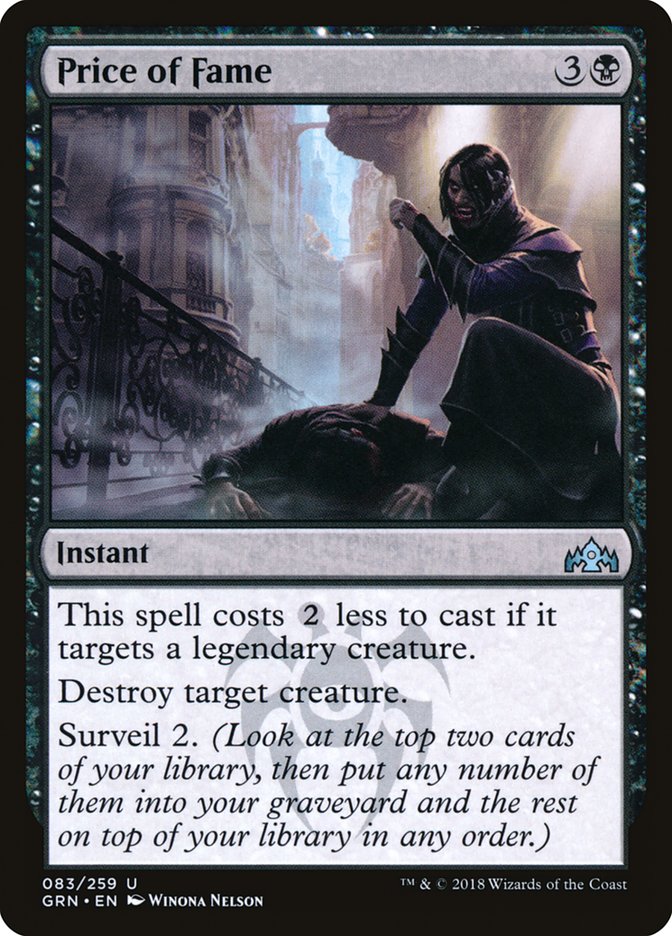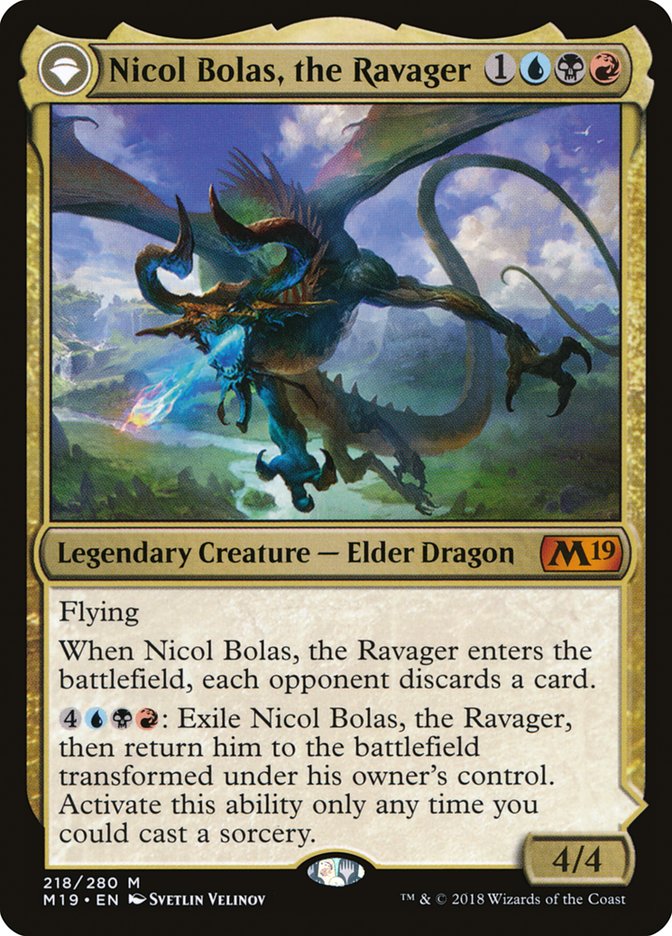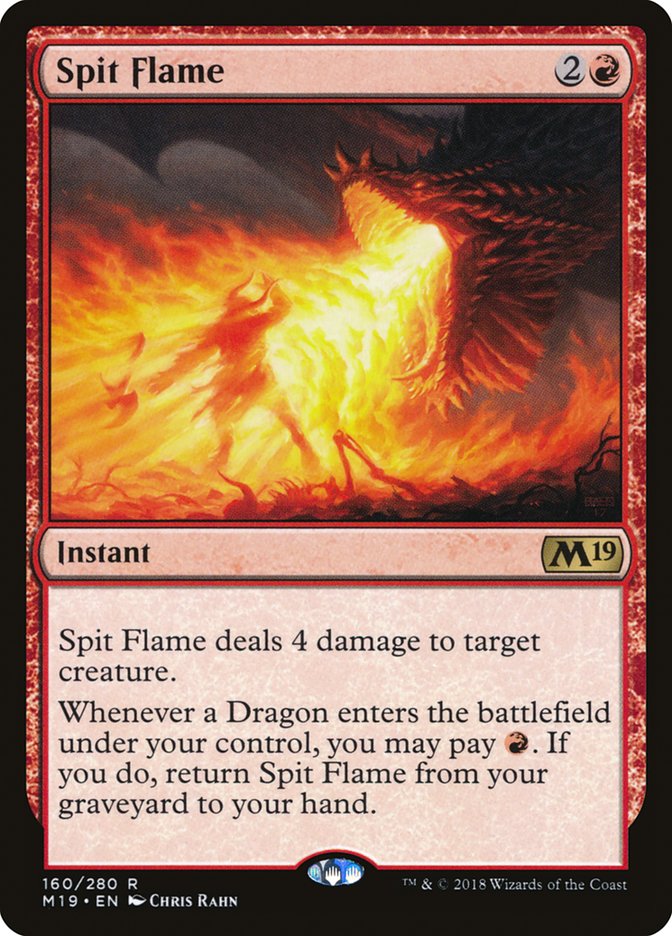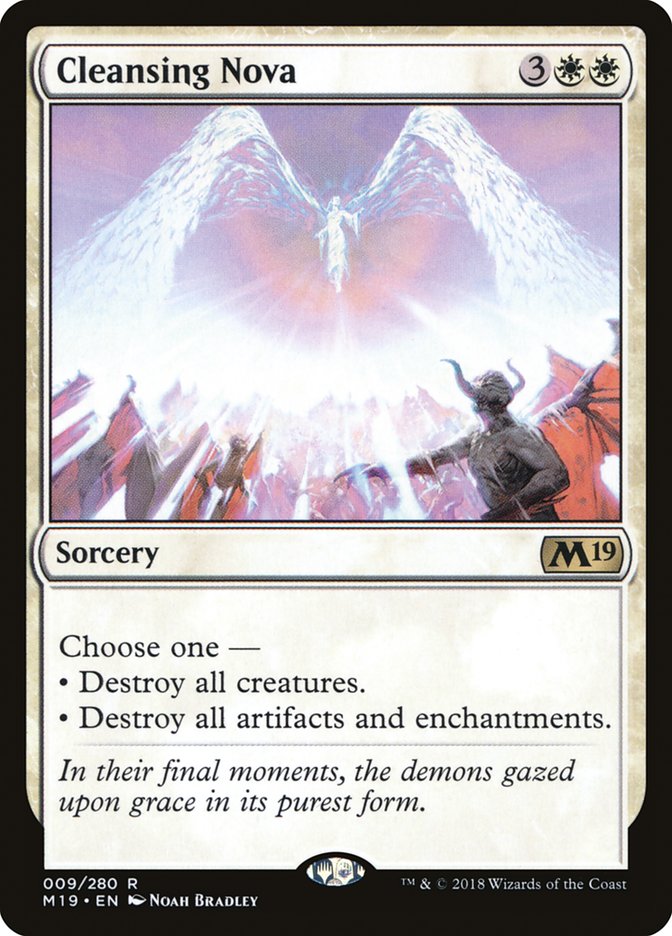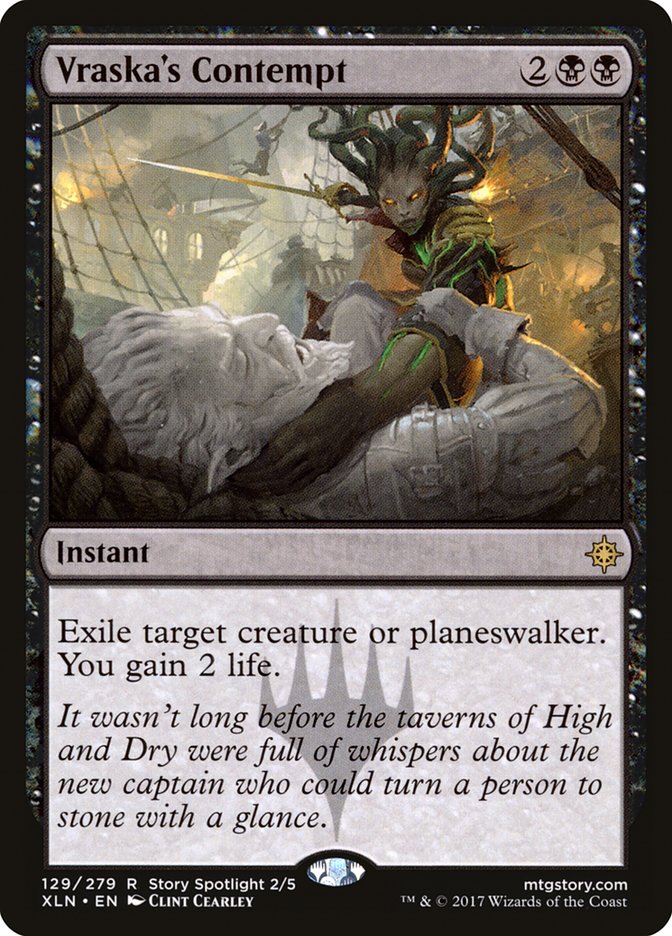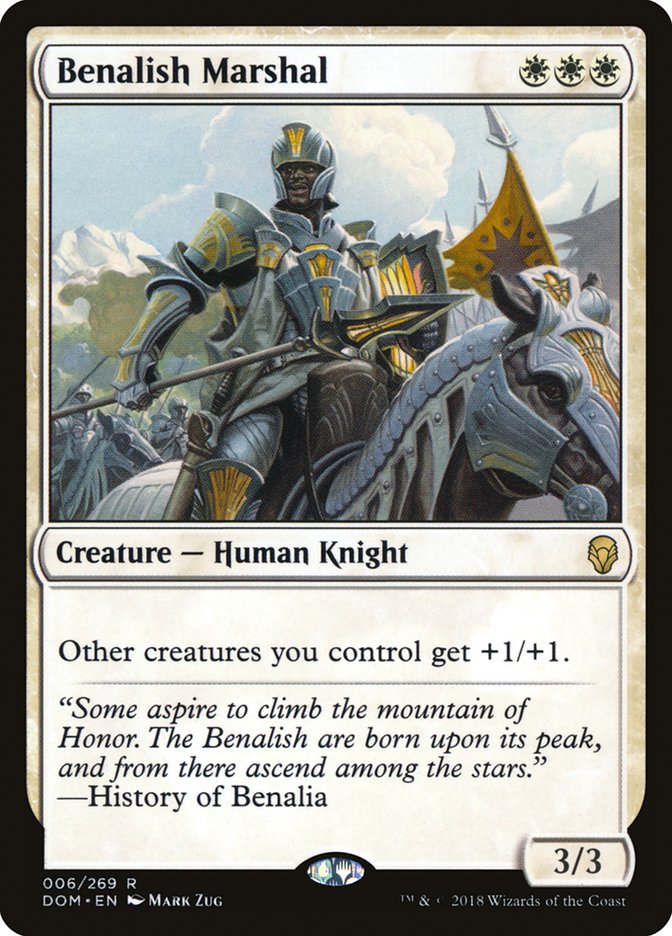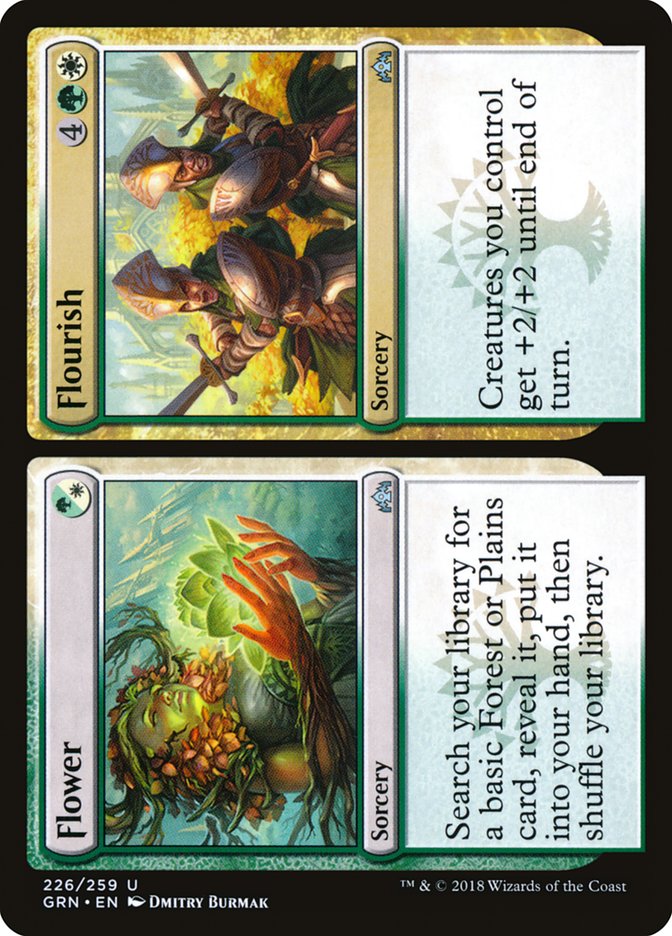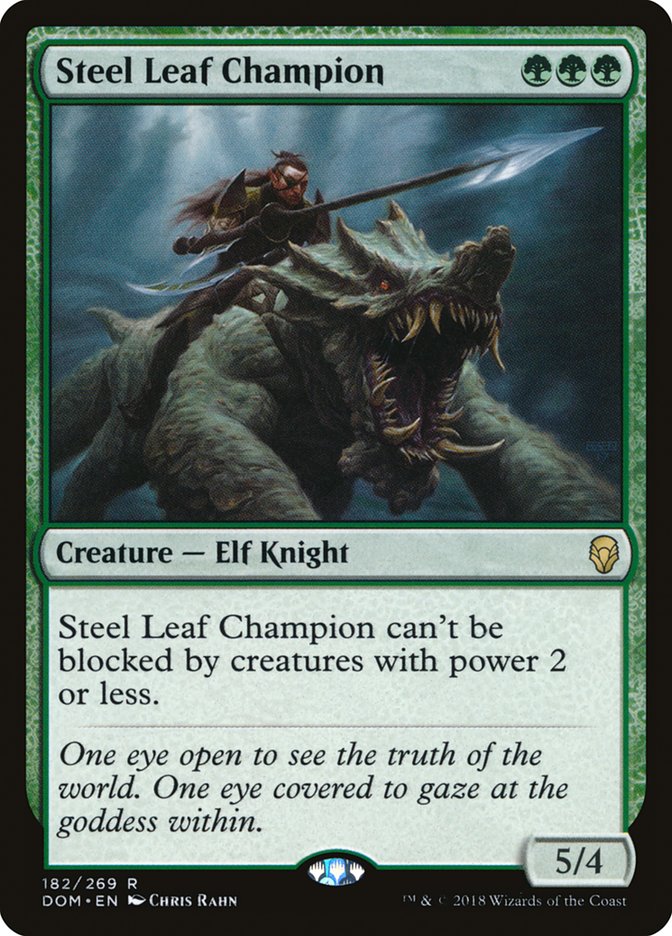Yesterday, our own Ari Lax
took a look at the MTGO PTQ Top 8
from last weekend, Standard’s first major, individual tournament after the
release of Guilds of Ravnica. Ari’s focus was on the individual
card choices of the top 8 decks, which makes sense given the diversity in
those elimination rounds. Those are the decks that are going to have the
most eyes on them, and without a clear dominant archetype or two, there
isn’t a lot to be gleaned in terms of big picture ideas of the format, so
it’s better to focus on the small-scale choices, like individual removal
spells and the efficacy of splashing or adding a full third color.
However, this was a 322-person tournament, and we have access to the entire
top 32, which gives a lot more information on which decks did well and
which ones underperformed. After all, the decks from 9th to 26th all
finished with the same record (7-2) as the two players that snuck into top
8 at 7th and 8th, so the margin of difference here is tiny.
We’re also operating in the first week of the format, when both the
metagame and the decks comprising it are taking shape. A gem of a deck
could fall short because it wasn’t tuned properly or missed out on a key
innovation, a phenomenon that’s less likely to happen later on when we have
a more complete understanding of the format.
So it’s important to look through all the data we’re given to get an idea
for what’s going on in this format and go from there to determine where
it’s going in the coming weeks. Here are my major takeaways from the
9th-32nd place decks:
Red Is Good, But Not Dominant
Red Aggro was far and away the most popular deck in
day two of the Team Constructed Open in Columbus
. Despite losing a lot in rotation, it gained three very powerful cards
from Guilds of Ravnica in Runaway Steam-Kin, Risk Factor, and
Experimental Frenzy, the latter two of which continue red’s run of
surprising card advantage which helps it fight through the typical
anti-aggro hate and lifegain that packs sideboards in the early weeks of
Standard.
But that success wasn’t replicated in the PTQ. There was a healthy amount
of red, five decks in the top 32 contained Goblin Chainwhirler, but only
one of them was of an aggressive bend, with the other four
taking the deck firmly into the midrange. And that one aggressive list was
all the way down in 27th place, finishing the swiss rounds with a solid but
uninspiring 6-3 record:
Creatures (21)
Spells (39)

There isn’t anything fancy going on here, but the cards are powerful, the
curve is low, and there’s plenty of reach. So what went wrong? After all,
it’s common wisdom that aggro decks perform well early because they get to
prey on untuned decks and brews that turn out to be non-competitive.
Ultimately, I think the incentives to be aggressive aren’t there. Red decks
last season became midrange decks before taking on more aggressive bents to
best combat the mirrors. There aren’t as many red midrange decks around as
last season, the best card for more aggressive takes in the red mirror,
Hazoret the Fervent, is gone, and your best replacement threat, Rekindling
Phoenix, is now cleanly answered by Lava Coil.
In a wider sense, I’m not scared by any of the early creatures in this
deck, save Runaway Steam-Kin. Neither of the one-drops come anywhere close
to the power of Bomat Courier and while Goblin Banneret is a nice mana sink
later in the game, it’s not very powerful on the opening turns when you’re
ideally using your mana to develop your battlefield, not pump it so it can
pump your other creatures via mentor.
Without a threatening early game and access to solid card advantage and
powerful creatures like Goblin Chainwhirler and Rekindling Phoenix, there’s
no reason to play underpowered cards and pigeonhole yourself into being the
beatdown every game. Go bigger:
Creatures (22)
- 3 Siege-Gang Commander
- 3 Rekindling Phoenix
- 4 Goblin Chainwhirler
- 3 Dismissive Pyromancer
- 3 Legion Warboss
- 4 Runaway Steam-Kin
- 2 Goblin Cratermaker
Lands (1)
Spells (37)
Sideboard

This list is a lot more powerful and still has the capability to end the
game quickly with a strong early curve backed up by some removal spells.
Going long, it can take over with card advantage from Experimental Frenzy
and Treasure Map while its two-drops, Dismissive Pyromancer and Goblin
Cratermaker, become more functional than mere Grizzly Bears.
There are two takeaways here. The first is that while Goblin Chainwhirler
will be around, it won’t be ubiquitous in the way it was last season. Good
one-toughness creatures will see plenty of play, and decks with lots of
them will be weak to red, but that won’t be enough to doom them. As someone
who has played more than their share of one-toughness creatures, I’m happy
about that.
Second, the common denominator for red decks is reach. The midrange lists
may not be filled to the brim with burn spells but Fight with Fire and
Banefire can end the game in one turn and Siege-Gang Commander has a lot
more than its own tokens to throw at your face. Along with stabilizing the
battlefield and gaining resource advantage you have to mind your life total
against red decks of all stripes.
Of course, simple lifegain spells aren’t going to be effective against a
midrange deck, so you need to find ways to incidentally gain life while
enacting your own gameplan. Which brings me to my next takeaway.
Wildgrowth Walker Is Breaking Out
In his article, Ari was high on the combination of explore creatures with
traditional midrange elements (planeswalkers, removal, etc) since the
former ensure you hit your land drops without falling behind on the early
turns.
For me, that’s only part of the equation. The top 8 had two base Golgari
decks that featured explore creatures, but the winning list had but a
single copy of Wildgrowth Walker and it was in the sideboard. If you look
deeper, Wildgrowth Walker was very successful when paired with the heavy
explore package of Merfolk Branchwalker, Jadelight Ranger, and sometimes
Seekers’ Squire. There were sixteen copies of the uncommon in the top 16
and four more in the seventeenth place list, making it, alongside its
explore brethren, one of the most played creatures in the top 32.
Wildgrowth Walker is the perfect card for incidentally gaining life against
aggro decks, since it also blocks effectively, and with two or three
triggers becomes big enough to rumble with more powerful and expensive
creatures and survive most red removal. If you’re gaining six life, it
becomes a lot safer to take the four damage off of Risk Factor, further
blunting those decks’ ability to play into the middle and late game.
Of course, you can’t just explore and gain life to beat red decks, not to
mention the rest of the format. So the question is how to best surround the
explore package to compete with the format at large. The most common answer
is Gruesome Menagerie:
Creatures (31)
- 4 Llanowar Elves
- 4 Wildgrowth Walker
- 4 Merfolk Branchwalker
- 4 Seekers' Squire
- 4 Jadelight Ranger
- 2 Ravenous Chupacabra
- 2 Izoni, Thousand-Eyed
- 1 Molderhulk
- 1 Golgari Findbroker
- 1 Doom Whisperer
- 4 Plaguecrafter
Lands (14)
Spells (15)

I struggled with building an effective Golgari deck and it looks like I
missed hard on the most effective cards for the guild. Charnel Troll and
Midnight Reaper are nowhere to be found here. Instead there’s Plaguecrafter
as the primary source of removal and card advantage from Find and Gruesome
Menagerie.
Menagerie is perfect here since you can bring back Wildgrowth Walker along
with Jadelight Ranger for immediate value and life, or go for one of your
explore creatures and Plaguecrafter to pair your card advantage with some
removal. Each individual explore trigger may not seem like much, but this
deck is going to be doing it on most turns of the game, giving it a ton of
velocity. It won’t be uncommon to find two or three Menageries in one game
and that’s going to make it hard for most decks to keep up. Planeswalkers
could be a problem but between Plaguecrafter and your density of creatures
you should be able to keep them in check.
What worries me most here is other midrange decks going over the top of
you. Big fliers like Lyra Dawnbringer and Aurelia, Exemplar of Justice can
potentially ignore your incremental card advantage and end the game in a
hurry, as can a Selesnya deck setting up a huge March of the Multitudes
into one of its many anthem effects. You don’t have a lot of targeted
removal, though Kraul Harpooner helps after sideboarding, and while Izoni,
Thousand-Eyed and Plague Mare can contain March of the Multitudes, an
anthem follow-up is going to be problematic.
The issue with big fliers is easy to mitigate with Assassin’s Trophy,
Vivian Reid, or Vraska, Relic Seeker, all of which are good in the deck
anyway, but March is a bigger problem because there’s no good instant speed
way of stopping it and you don’t have the removal, save for Finality, to
keep their battlefield free of convoke fuel. You’re going to need to time
your Duresses well in that matchup and likely dodge the top of their deck,
but having a deck that excels against aggro and control is still a good
place to be.
StarCityGames.com’s newest writer, Abe Stein, will be tackling Golgari
decks later this week, so I’m looking forward to how he tackles these
issues. But to me, the most elegant solution would be to fuse the explore
package with some Selesnya elements, as the tenth-place finisher did in
this innovative list:
Creatures (22)
- 4 Wildgrowth Walker
- 4 Merfolk Branchwalker
- 4 Jadelight Ranger
- 1 Militia Bugler
- 2 Thorn Lieutenant
- 4 Knight of Autumn
- 3 Trostani Discordant
Lands (18)
Spells (20)
Sideboard

This list trades the card avantage of Gruesome Menagerie for the ability to
play its own copies of March of the Multitudes and anthem effects in
Trostani Discordant and Path of Discovery, which puts Wildgrowth Walker
into overdrive. Can you imagine curving Walker-Jadelight
Ranger-Path-Trostani? Uninterrupted, you’ll have gained fifteen life and
your two-drop will be a 7/9. Oh, and after exploring five times I’m going
to assume your turn six will be good too.
This deck also gains access to Knight of Autumn, which I think is
well-positioned right now since all its modes are relevant. You can gain
life against aggro decks, trade with Steel-Leaf Champion, or destroy a host
of powerful permanents, ranging from History of Benalia and Search for
Azcanta to Conclave Tribunal and Experimental Frenzy. It’s going to be good
against nearly every deck and slots perfectly into the deck.
Losing out on Gruesome Menagerie is disappointing, but The Eldest Reborn,
which appears in the sideboard, is a similar effect and potentially more
powerful, so I’m quite high on this list.
I’m starting to view the two-drop as this generation’s Kitchen Finks
because of its ability to blunt aggro decks while still being effective
against midrange and control decks. It survives a lot of early removal
(Justice Strike, Shock, Dead Weight, Moment of Craving) and will eventually
demand an answer. You don’t have to surround it with underpowered cards to
make it work, and there’s a high payoff for building around it.
If Standard becomes a haymaker fest, Wildgrowth Walker could get left
behind, but the power of Teferi, Hero of Dominance and control decks in
general will keep those strategies in check so I’m betting that Wildgrowth
Walker’s place in the format will be secure for a while.
You Can Go Over the Top, Literally
If Wildgrowth Walker does catch on, however, then there are ways to go over
the top of it. I mentioned March of the Multitudes, and I do think Selesnya
decks will see significant play, but I was more surprised by the presence
of so many decks relying on big fliers. Owen Turtenwald
recommended that players maindeck Lyra Dawnbringer
if they weren’t playing red last weekend, and it looks like many players
took his words to heart and were successful in doing so:
Creatures (22)
- 4 Adanto Vanguard
- 4 Knight of Grace
- 4 Lyra Dawnbringer
- 3 Shalai, Voice of Plenty
- 4 Resplendent Angel
- 3 Aurelia, Exemplar of Justice
Lands (8)
Spells (30)

Lyra Dawnbringer was the only creature to crack the top 4 in terms of most
played among the top 32 that didn’t contain explore in the text box, and it
shouldn’t surprise anyone. The removal right now is quite good, but it only
takes a turn or two of Lyra to generate an incredible advantage, especially
if it comes down following Aurelia, Exemplar of Justice.
Often, a turn 5 Lyra Dawnbringer leads to a stalemate where it’s hard for
the Angel’s controller to attack without opening themselves up to a counter
attack, but with the vigilance from Aurelia, Lyra can play both sides of
the ball with the same brutal effectiveness. Turning the corner is simple,
and any attempt to go wide can be met with Deafening Clarion.
There’s a host of good removal options in Boros, but I like Justice Strike
here for its versatility in killing early threats as well as opposing Lyra
Dawnbringers. Lightning Strike still has a place in helping you win tight
races, while Ixalan’s Binding provides a bit of versatility against
non-creature threats and the rare threat that survives your other removal
(like Wildgrowth Walker).
This deck isn’t interested in playing an attrition game since it lacks in
the card advantage department, but if your removal doesn’t line up against
its threats I don’t care how many cards you draw, you aren’t beating these
Angels. That makes this deck a risky choice moving forward, and likely one
that will cycle in and out of the metagame as the removal changes, but it’s
one to always keep in the holster to be deployed when the metagame is
unprepared.
If you’d rather your flyers be in a shell with more staying power if
they’re answered, you’ll have to shift from Angels to Dragons:
Creatures (14)
- 3 Wily Goblin
- 2 Sailor of Means
- 1 Rona, Disciple of Gix
- 2 Verix Bladewing
- 3 Nicol Bolas, the Ravager
- 3 Niv-Mizzet, Parun
Planeswalkers (4)
Lands (17)
Spells (25)

I’m not sure what exactly to make of this list, but I like when midrange
decks have the ability to ignore some threats and race in the air, since it
affords them greater tactical flexibility. With the commitment to red and
blue necessary to play Niv-Mizzet, Parun, you can’t play Vraska’s Contempt
reliably, and red removal is going to miss on some big creatures so ending
the game before too many of them show up is important.
I do like the singleton Price of Fame since it hits a few important
threats, namely Ghalta, Primal Hunger, Lyra Dawnbringer, and Aurelia,
Exemplar of Justice, but you’re really hinging on the flyers here to
contain opposing planeswalkers, at least in game 1 before the counterspells
and Duresses can come in. There are some concerns here, but the deck is
very powerful and Sarkhan, Fireblood is a very powerful card selection
engine to have. You can even shift into a protect the queen strategy with
it if you don’t have a window to tap out in a control mirror.
As the game goes long, all three of the Dragons will provide card advantage
and Nicol Bolas, the Ravager can simply take over a game. If that doesn’t
come together, you can still play an attrition game with Dragon’s Hoard,
Treasure Map, The Eldest Reborn, and Spit Flame, among other sources of
card advantage. It’s a strange one for sure, but this deck is doing very
powerful things so I’m going to keep an eye on it.
Control and Selesnya are Enigmas
Despite the oft-repeated mantra that control struggles on the opening weak,
the power of Teferi, Hero of Dominaria and other control elements was
enough to convince players to go for it and one thing is clear: control is
good. What isn’t clear is what build of the archetype is best.
The top 8 of the PTQ had control decks of the Jeskai, Esper, and Izzet
variety, which already offers little to go on. Digging deeper isn’t any
more help since the top 32 has Azorius, Esper, and a very different flavor
of Izzet. The only color that isn’t represented is green, and I think we’ve
all had enough of Nexus of Fate and fogs for now.
Much was said of the mana surrounding Teferi not being good enough to
support it, but the card is still incredibly powerful, likely the most
powerful in the format, so it’s no surprise to see it force its way into
decks. You just have to be disciplined with your mana:
Creatures (1)
Planeswalkers (4)
Lands (22)
Spells (33)

The title says Esper, but this deck is really Dimir, splashing for Teferi,
Hero of Dominaria. A few other white cards come along for the ride, but
they wouldn’t be nearly enough without the dominant planeswalker and the
check lands are enough to cast it reliably.
This was the most represented control deck and it’s my pick for the best,
although I’m very high on Cleansing Nova, which is too prohibitively costed
to make it here. Access to the more powerful sweeper is the primary
advantage I see Jeskai and Azorius builds having, but black has the edge
overall for a few reasons:
First, I think retaining an instant speed answer to planeswalkers in
Vraska’s Contempt is too important. Downgrading Cast Out to Ixalan’s
Binding is huge and while Settle the Wreckage is powerful, the format right
now is very punishing to that card with things like Experimental Frenzy,
March of the Multitudes, and Banefire.
Playing black gives you access to Thief of Sanity, which is excellent at
punishing players for boarding low on removal against you. Yes, white gives
you access to History of Benalia, but that falls victim to both Negate and
Duress, so it’s less likely to resolve.
And lastly, playing discard spells like Duress and Thought Erasure is huge
in control mirrors. The information advantage, as well as the ability to
efficiently force your key threats through counterspells is huge. As the
metagame takes shape, building control decks only becomes easier, so
control mirrors become more prevalent. Black is the color that wins control
mirrors, so don’t leave home without it.
Lastly, we come to Selesnya. Gerry Thompson wrote the following
last week
and it proved prophetic:
which makes hammering down the best build incredibly difficult.
-Gerry Thompson
Selesnya was
my pick for the best guild in the set
in large part due to the mana fixing and consistency provided by Flower,
but I also was attracted to it because of the sheer density of quality
cards it has at its disposal. That density was on full display last
weekend, as we saw Selesnya decks of many shapes and sizes.
The Team Constructed Open had two midrange token strategies in the finals,
and I already featured Tulio_Jaudy’s base Selesnya explore deck. But the
most successful list in the PTQ was closer to Mono-White Aggro:
Creatures (24)
- 3 Snubhorn Sentry
- 4 Benalish Marshal
- 2 Shalai, Voice of Plenty
- 4 Thorn Lieutenant
- 3 Emmara, Soul of the Accord
- 4 Venerated Loxodon
- 4 Hunted Witness
Lands (8)
Spells (28)

With eleven one-drops and Benalish Marshal, this deck is capable of some
very powerful starts while March of the Multitudes and Shalai, Voice of
Plenty give it enough staying power to compete into the lategame.
The triple-color three-drops from Dominaria are among the most
powerful threats in the format, but the multi-colored nature of Guilds of Ravnica means the opportunity cost of committing to them
is quite high. You’re typically staying in just the one color and thus,
giving up access to a lot of powerful cards, but with Flower, Selesnya has
enough fixing to play either Benalish Marshal or Steel Leaf Champion with a
small splash, in this case for some powerful two-drops and March as the end
game finisher.
Normally, a splash for two-drops would be too awkward on the curve for an
aggressive deck, but this one isn’t trying to push a ton of damage on turns
2 and 3, but set up for devastating attacks on turns 4 and 5 that either
literally or effectively end the game. A start of Flower into Thorn
Lieutenant or Emmara, Soul of the Accord is perfectly fine, and a triple
one-drop into turn 3 Flower+two-drop opening is excellent, even though
neither is putting the opponent under immediate pressure.
And should you have a dual land, starting on one-drop into two-drop sets
you up for either Benalish Marshal or Venerated Loxodon and thus, a huge
lead on development. The one-drops in a convoke-centric deck are acting
more like mana creatures than typical aggressive creatures like Savannah
Lions, and the one-drops here are perfectly suited to that job. Legion’s
Landing and Hunted Witness leave something behind when removed, making it
harder for the opponent to keep you off curve, and Snubhorn Sentry plays
solid defense against other aggressive decks while being the biggest
one-drop when you’ve built your battlefield and are ready to attack.
I’m partial to the midrange Selesnya decks because they’re a bit more
flexible and more powerful with cards like Trostani Discordant, but
Benalish Marshal is the more powerful anthem effect, and it’s very
appealing to have nearly every maindeck card that costs more than three
have convoke. This deck is going to cast five or more spells on the first
three or four turns of the game with regularity, at which point a single
Conclave Tribunal likely ends the game before your opponent’s more powerful
elements can take over.
Moving Forward
These are the decks that I think have the most promise moving forward, and
as you can see every guild in Guilds of Ravnica as well as a wide
range of archetypes, is represented. The format looks very healthy for the
moment, although it’s clear that Ixalan block was held back by
more than just the power of Amonkhet and Kaladesh. The
block is underpowered, and Guilds of Ravnica is significantly
better so it’s not a surprise that the format is being dominated from the
beginning by decks built around the five available guilds from the new set.
The biggest question has been what the best way to build around those
guilds would be, and the top 32 from the MTGO PTQ has gone a long way
towards answering those questions, at least for the time being. This is the
most exciting time for Standard in years, and I’m expecting innovation to
occur for a longer time than is typical simply because players are excited
to brew and tune decks with these cards. That’s going to make for a more
dynamic metagame that rewards players for staying up to date. One thing’s
for sure, and that’s if you plan on entering Standard tournaments this
season, you’re going to have to put in the work and stay current.


